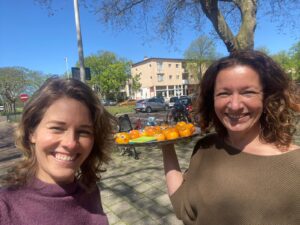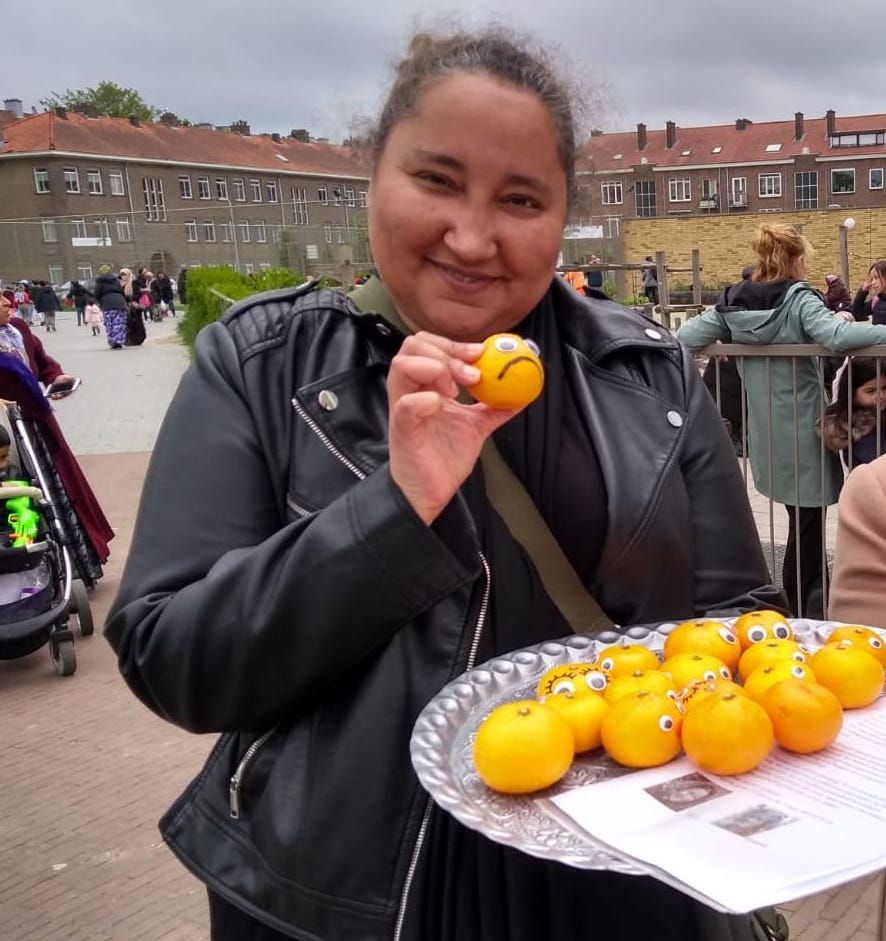Do you remember the last time you talked with a complete stranger? I mean, not like asking where to find the toilet, but an actual conversation?
Technological developments have moved us away from contact with strangers. Since we all have our phones with us, we never have to ask people the time or where the nearest busstop is. And when waiting for the bus, we find our phones more interesting than the people waiting next to us. Corona has not helped either as it forced us to keep distance or even stay home, giving us a hard time to talk with strangers as well. And the less we do it, the more unnatural and uncomfortable it feels to do it.
As a Participatory Action Researcher you have a lot of conversations with strangers. Seriously, a LOT. I recently realized how often I get the question of how to talk with strangers when initiating a Participatory Action Research. How to make that first move. So I decided, why not write a blog about it?
What I like about conversations with strangers, is that when you apply basic PAR principles such as listening non-judgmentally and from genuine curiosity, without getting in debate or giving solutions, you get the finest stories. Stories about real life as people perceive it from their deepest selves. The actual raw stories that teach you more about life than any book.
But how do we start such conversation?
When we initiate a Participatory Action Research, we first make a Participatory Action Research design to see what the goal of our PAR is, who to involve, what PAR-methods to apply et cetera. From there we can make a plan of things to do. Most of the time this involves having informal conversations with people about the PAR-subject. But there comes the big question: how do we approach those people? How do we start such conversation? The answer I think is simple -just do it!- but not easy.
Here are some tips.
- 1. Get comfortable yourself. First of all, we have to get rid of that confining idea of that it is ‘stupid’ to approach a stranger – and the uncomfortable feeling that comes along with it. We have to get back to that feeling of when it was normal to approach people (if at all you are old enough to have ever felt that). I think here it is a matter of just doing it -a lot- and enjoy all your inner assumptions being tackled in each and every conversation.
- 2. Ask first. Once you approach someone, ask whether you may ask a question at all and respect (and don’t feel bad) if you get a ‘no’.
- 3. Be you. Don’t start off with an entire introduction of your PAR, you may ‘lose’ them halfway. Rather ask the question as being you yourself as a fellow human, not as the action researcher. Once you feel along the conversation that they are interested, at the end of it you can tell them about your PAR and even invite them to participate.
- 4. Be creative. You can approach people ‘clean’, without any tools or ‘tricks’, but you can also make it a little more fun or interesting to talk with you. For example, go sit somewhere on a busy plaza with a can of coffee to offer to people passing by. Hire a funny bus and invite people in to talk about the PAR-subject, drive people around in a tuc tuc, whatever you may come up with that triggers people’s interest! In our latest Participatory Action Research, my colleague Wilma van der Vlegel came up with a great idea to get in contact with strangers. Our purpose was to have a first informal conversation with people about how they perceive their health, and then invite them for an in-dept interview later on. We bought tangerines and put eye-stickers on it. We asked people passing by to draw a mouth on the tangerine that represents how ‘fit’ they feel now. That helped us start the conversation and many of the people we met there joined the entire PAR! I dubbed it ‘the Tangerine-method’

- 5. Keep your questions simple, open and positive. Need I say more?
- 6. Don’t judge, get into debate or pose your opinion or solutions to them. People did not ask for your opinion or help, so respect whatever they say, whether you agree or not.
- 7. Don’t make any notes of the conversation. This helps to keep an informal, accessible atmosphere.
- 8. Be genuinely interested. People will notice whether you are genuinely interested or whether you ‘want to recruit people for your PAR’. And it makes a difference to whether they will give you their time and viewpoints or not. Being genuinely curious to the other’s viewpoint also helps a great deal in formulating new questions based on the answers you get and to get ‘the flow’.
- 9. Know where to stop. Use your senses to know when it is time to stop the conversation. Don’t try to ‘get more out of people’. Rather have a good short talk and get the person’s contact to talk more later than a longer one and an agitated person!
- 10. Enjoy! People will enjoy when they see you enjoy the conversation. Win-win!
Once you apply these tips an afternoon in the park or wherever you find strangers, I am convinced you will return home feeling energized, inspired and boosted with new confidence. Let alone the set of beautiful, ‘raw’ stories and new contacts you have for your PAR!
So go out, let your natural curiosity flow and you will be surprised how great a conversation with a stranger can be!
Want to learn more about informal conversations or other PAR-methods? Get the second edition of ‘Handboek Participatief Actieonderzoek. Samen bouwen aan een betere wereld’, written by SevenSenses founder Madelon Eelderink.
Do you want to learn PAR skills? Now you can subscribe PAR Practitioners Program!

